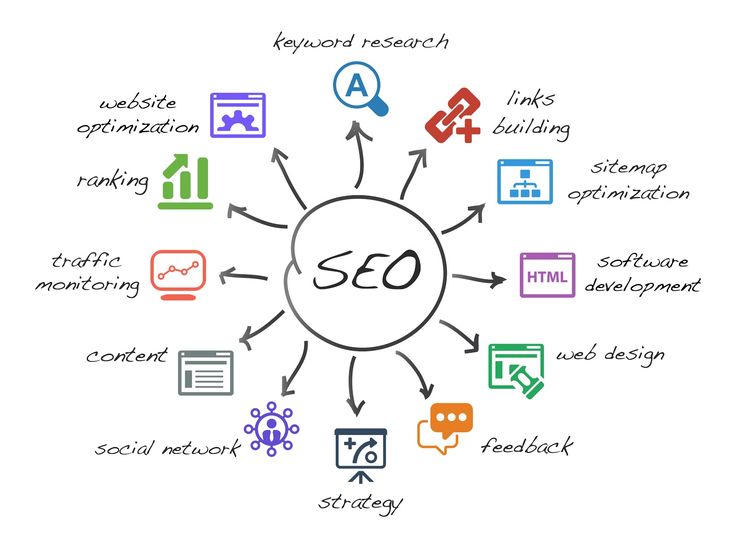I realized this morning that no matter how funny I think a piece of writing is, I need feedback (for questionable writing) and reinforcement (for great writing). The quote above speaks to the idea that if no one reads your writing, then why write at all. The key to someone finding your article or content on the Web, is Search Engine Optimization (SEO). If you are reading this right now, you’ve realized how important SEO is to anyone that publishes content. The crux of the matter is helping people find your content when they type a keyword into Google (or Bing – yeah right). I know I should leave well enough alone, but my agenda is to get people to understand one thing:
“No one is going to trick Google into giving your content top billing, they have the resources to level the playing field at every turn. You must be straight forward and to the point with content, titles and URLs so that the algorithms Google uses can figure out what you’re saying.”
Google spends millions, maybe billions, of dollars ensuring that their algorithms have the potential to find content to display in order of real-world relevance within search results. I realized a few years ago that there are no experts in this field, not really. You see, being an expert is meaningless, because no one has the will (or the time) to digest all these algorithms. To make matters worse, these algorithms are hidden from us anyway. So the best thing to do is seek out an expert at being honest, straightforward with the common sense to understand what people are looking for (what keywords they’ll use to find your stuff).
All the being said, I’m going outside my comfort zone to pick only 5 simple rules for the sake of making this process viable for writers (all of it is common sense).
- HUMAN READABLE SEOed URLs.
Please be mindful of the URL for articles. They must be human readable so that Google users can scan through the articles that are offered up on search results and easily find what your article is about. Make them short and to the point. Make sure the URLs contain the main keywords that your article is about. The URL does not need to make sense necessarily (the Title can do that), they should just help Google and users know the keywords that you talk about in your content. For instance if the title is “Mother’s are the best friends a person could have” the URL can be: website.com/mothers-best-friend-person-could-have. - CONCISE ARTICLE TITLE:
Titles need to make sense and compel the reader to read on. To be clear, just make sure you tell the reader what you are about to say in the least words possible. Google only gives weight to the first 3 or 4 words anyway, so going on and on about what you article is about is not helpful. It makes sense to think about what you want to say before you ever write a word. I know it’s fun to write an abstract title that is either funny or quirky, but that will not help anyone find your article or content. If you can read a quick description in about 3 – 5 words, then you will get a bigger audience. Remember, to find your content, users are scanning a lot of titles, so the ones that stand out are the ones that are straight forward and easy to digest.I tend to add the most important word first. If I’m talking about a brand, I put the brand as the first word in the title. That being said, it does pay to know your audience. For instance, if a brand hires a famous ambassador, let’s say Jenifer Lopez, then I would add her name first and then the brand’s name. Most likely her name is searched more than the brands. Some will argue that there’s too much competition for the Word “Jenifer Lopez” so it won’t matter that it’s first. Well, all I can say to that is WRONG! You see if one looks up the brand they will only see snippets of titles. In those snippets the first word always stands out. Also, someone may put in both words, “Jenifer Lopez loves brand name”. The psychology here is that Jenifer Lopez is usually what people are looking for first and the brand second. The odds are always better when the bigger brand is up front, that people will find your content. - IMPORTANT CONTENT ON TOP:
Please look at this article: https://sportiela.com/birkenstock-the-70s-and-today/- This URL is barely shortened uses powerful keywords. One could argue that Birkenstock is a competitive word , but people looking for historical information may be attracted to this URL since the point is easy to undersand. That said this is predicated on people searching for Birkenstock and 70s, so the author could have “…birkenstock-history-then-now” to widen appeal. The problem is that this is misleading. so if you want a specific type of reader then you have to be more clear. The article you are currently reading is more for any writer, so the URL reflects that. In WordPress a properly SEOed title will produce a powerful URL.
- Please, for the sake of all that is holy, be concise on titles, URLs and articles for the rest of your life. People today want you to get to the point. Using specific descriptors and adjectives that are already apparent to the reader instead of just describing where the link takes you to, makes the link (or title) longer for no reason. Just think to yourself, is a long description within a link more compelling than a short one – is it easier to read quickly? In fact, I personally don’t read descriptions at all. I just click links that compel me to because they are short, “software”, “porn”, “food”, “money” etc..
- PEOPLE DO NOT READ:
You have to come to the conclusion that people do not read to really become a SEO expert. I repeat, PEOPLE DO NOT READ! If you admit to yourself that this is true, then you will finally understand that if we want people to read our crap, then you have to lower the price of entry. At this point two sentences is a liability if you can shorten it to just one. I beg you with all my heart to consider shortening all that writing you do up front at the entry point of your content. What most of us fail to realize is the fact that one sentence is already too much of a barrier for most users, let alone two or three or more. - NO WALLS OF TEXT AT THE TOP:
LOWER THE BARRIER OF ENTRY TO CONTENT. Avoid walls of text at the top of your article. Find the most concise way of telling your readers what the article is about. No amount of descriptors or adjectives will make people read what they are not interested in. You MUST tell the reader what the article is about in an EXTREMELY concise way and let them decide if that is what they want to read. You can add all the descriptors and adjectives once they are compelled to read on. Ramp up their interests, do not make them read walls of text to learn what the topic of your content is all about.
I want to be more like a real person and just give up on telling people the same old message year after year. I know it’s the healthy way to live, but giving up is difficult. If you are a published writer on the Web, but you still don’t know the essential point of SEO, then this article wont help. The thing is, if I thought that way, you wouldn’t be reading this article now. I have nothing to lose by saying it even if you’re not reading this (lol), so if I have to talk about SEO until I’m dancing on your grave, then so be it…


Recent Comments